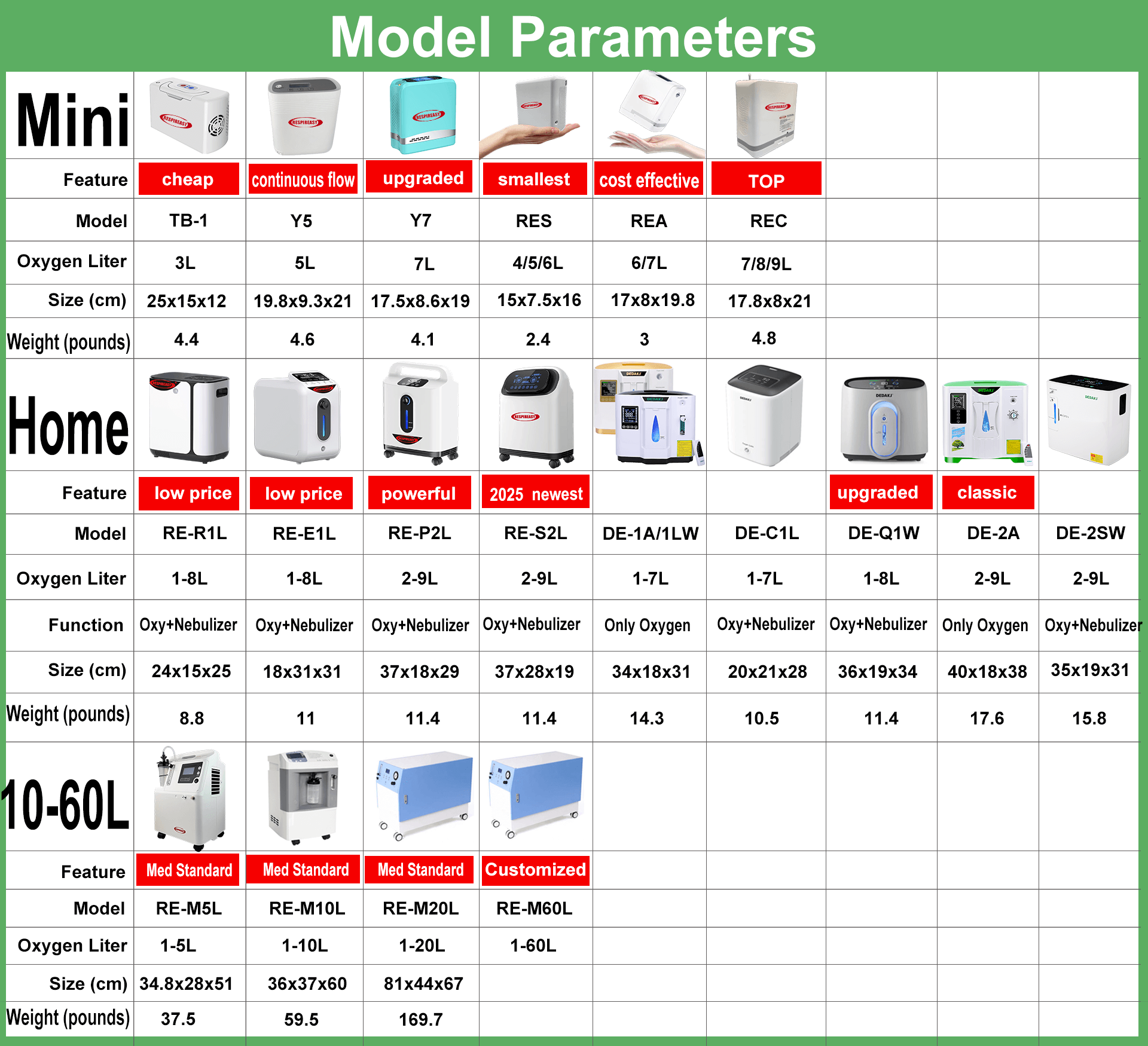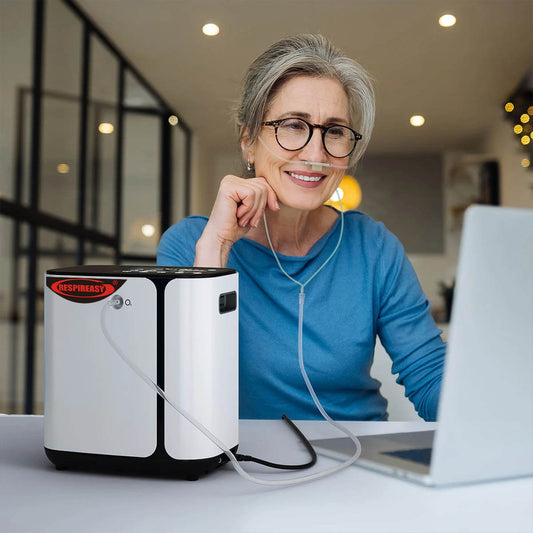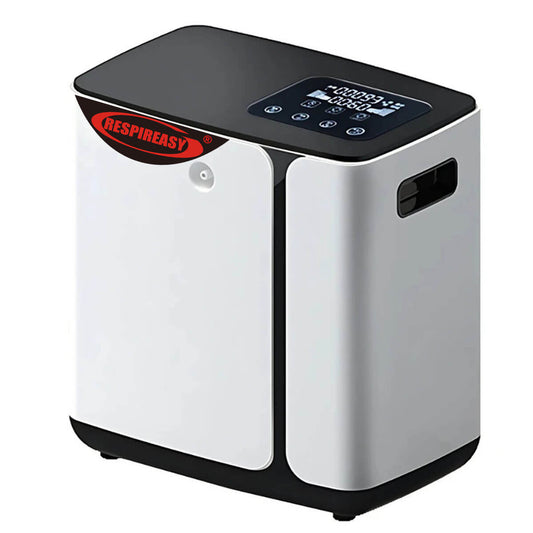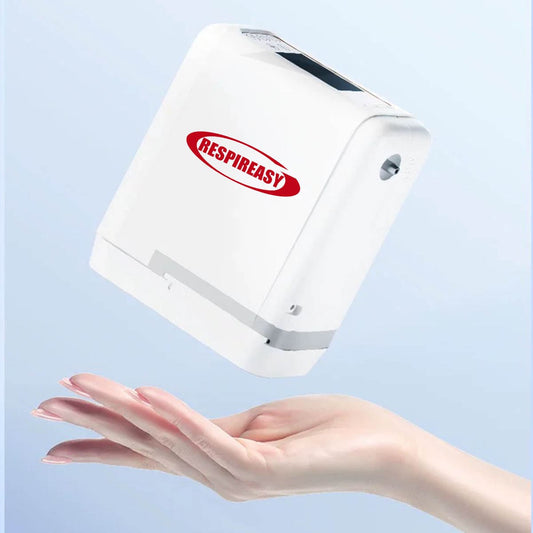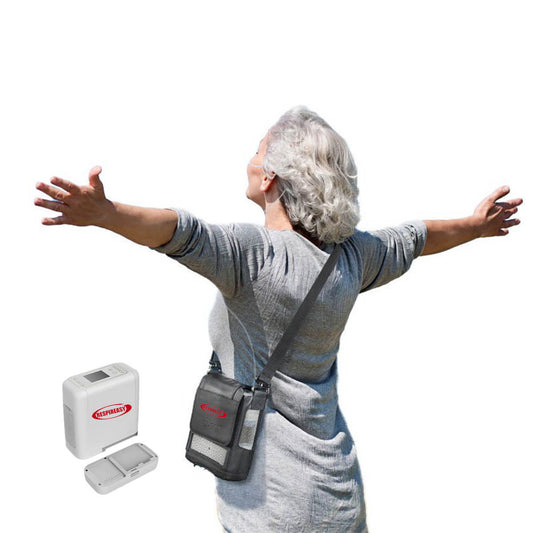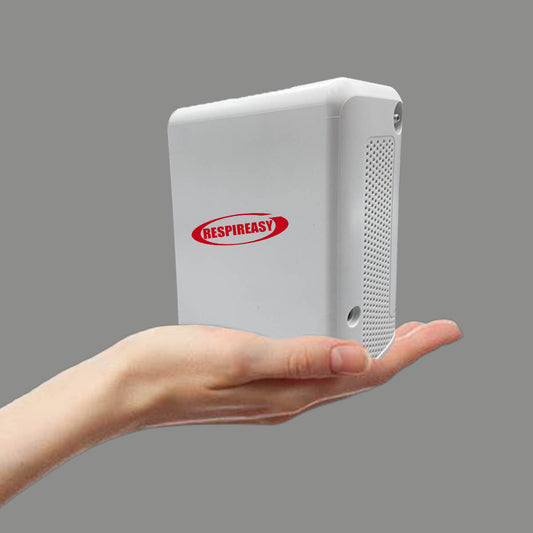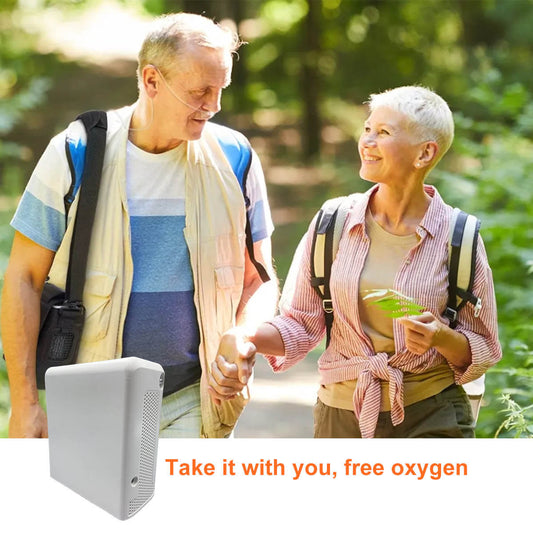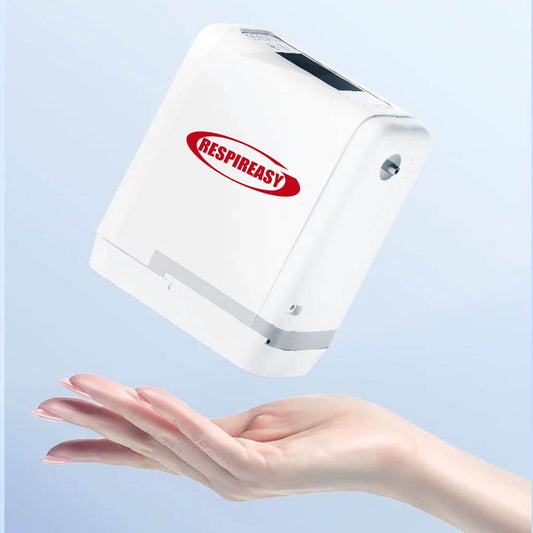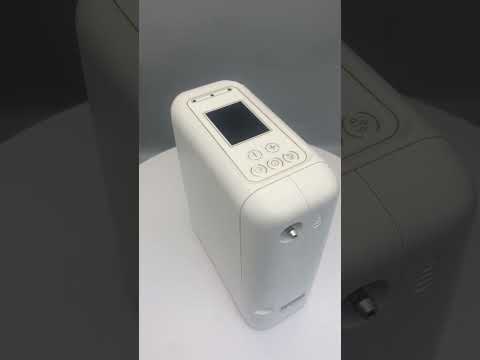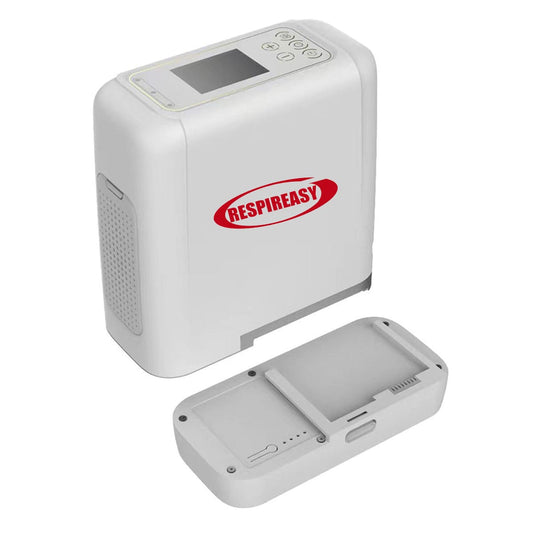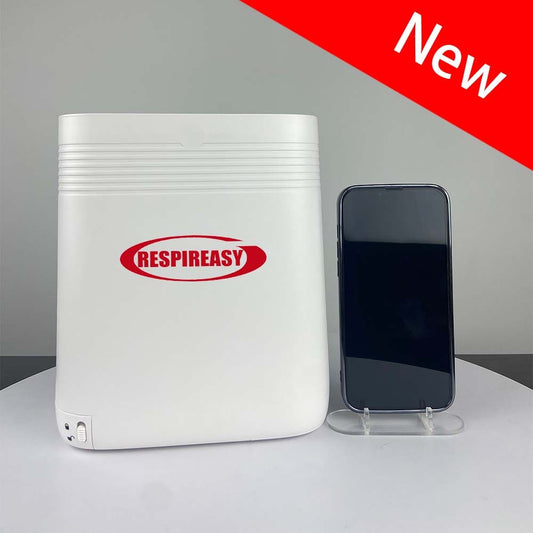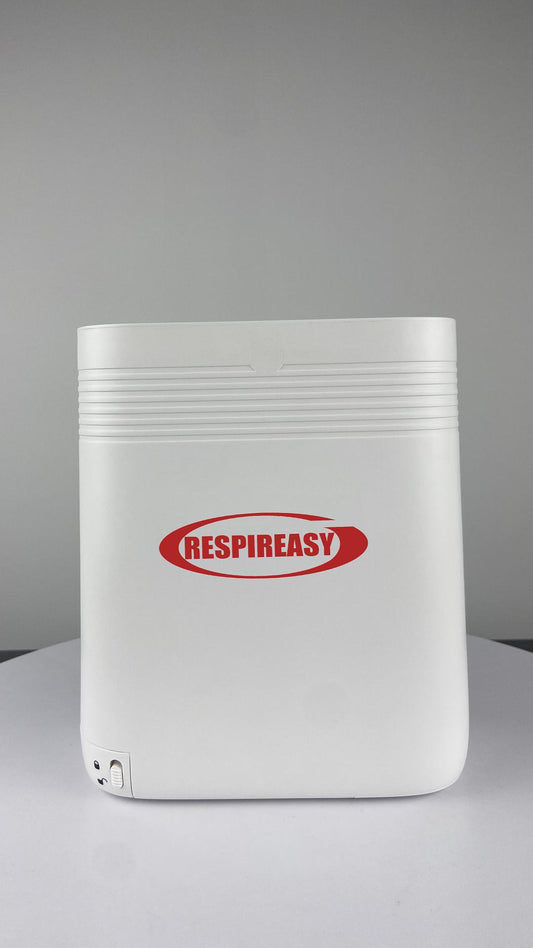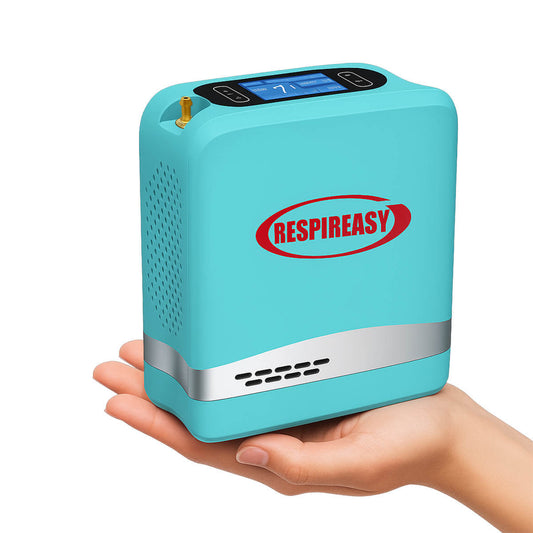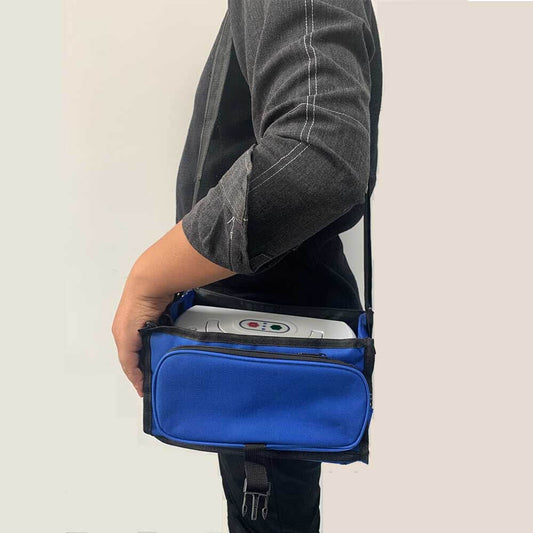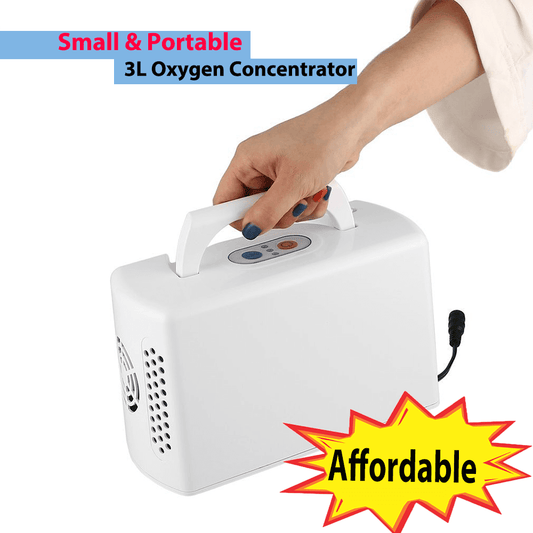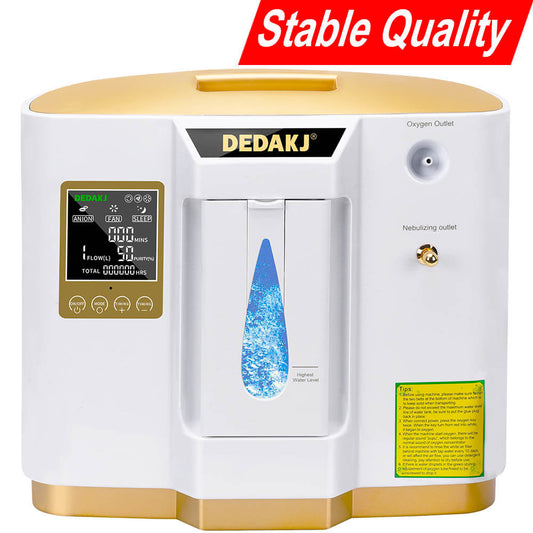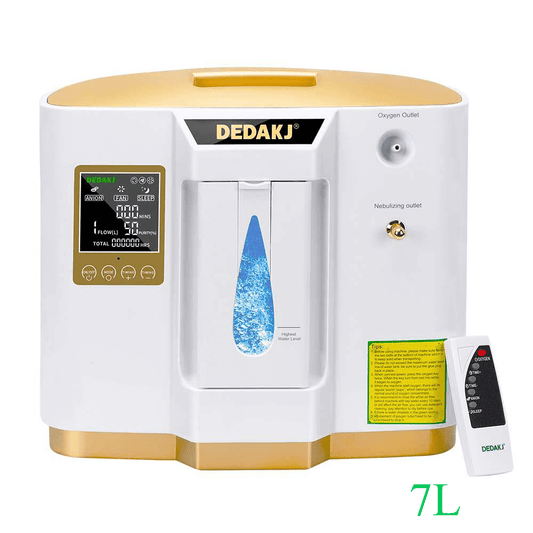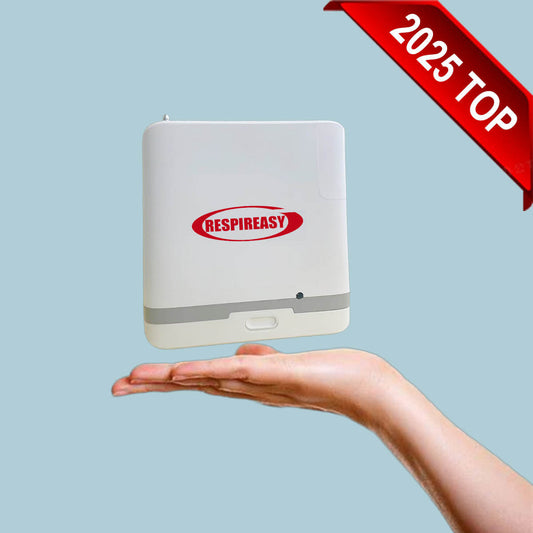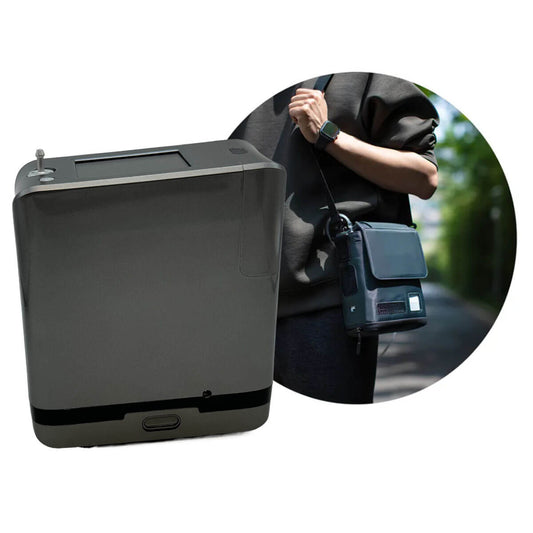10 Advantages and Disadvantages Parts of Oxygen Concentrators
Oxygen concentrators have become a must-have for many people who need supplemental oxygen therapy. These machines offer an efficient and convenient way to deliver oxygen without the need for bulky tanks, making life easier for people with chronic respiratory conditions. However, like any medical device, oxygen concentrators come with their own advantages and disadvantages. Understanding these advantages and disadvantages can help patients and caregivers make an informed decision about whether this type of oxygen delivery system is the right choice for their needs.
Advantages of Oxygen Concentrators
- Portable: Oxygen concentrators are designed with the user's mobility in mind. Whether it's a tabletop version for home use or a small, lightweight model suitable for mobile use, these devices allow patients to move freely without being tethered to a fixed device. Especially those designed for portability, patients can carry them with them for easy travel and daily activities.
- Cost-effective in the long run: While the initial investment in an oxygen concentrator can be high, it generally becomes more economical over time. Traditional oxygen tanks require regular refills, which can quickly add up to costs. In contrast, oxygen concentrators extract oxygen from ambient air, eliminating the need and associated costs for tank transportation or pickup.
- Provide a continuous supply of oxygen: Unlike oxygen tanks, which can become depleted and need to be replaced or refilled, oxygen concentrators work by taking in ambient air, removing nitrogen, and delivering near-pure oxygen to the user. This process ensures that the user has a continuous supply of oxygen as long as the device is operating and there is power.
- Eliminating the need for oxygen tank refills: One of the main conveniences of using an oxygen concentrator is eliminating the need to frequently refill oxygen tanks. This not only reduces the logistical challenges and recurring costs associated with refills, but it also ensures that the user has a more predictable and stable source of oxygen.
- Suitable for home use: Oxygen concentrators are designed to blend seamlessly into the home environment. They do not take up much space, and many models are aesthetically pleasing. Their user-friendly design ensures that patients can use them without extensive technical knowledge. Whether used continuously during sleep or intermittently throughout the day, their adaptability makes them ideal for residential settings.
- Quiet operation: One of the notable benefits of modern oxygen concentrators is their quiet or near-quiet operation. This ensures that the user and those around them are not disturbed by noise during operation. This is particularly beneficial when used at night, ensuring uninterrupted sleep.
- Low Maintenance: Oxygen concentrators are designed to last and require minimal maintenance. Aside from occasional cleaning or filter replacement, no intensive maintenance is required on a regular basis. This reduces long-term care costs and workload for both users and caregivers.
- Reduce the risk of oxygen depletion: With traditional oxygen tanks, there is always a risk of oxygen supply depletion, especially if refilling is delayed or problematic. Oxygen concentrators, on the other hand, continuously generate oxygen from ambient air, which greatly reduces the risk of oxygen depletion. This gives users peace of mind, knowing they have a reliable source of oxygen.
- Environmentally Friendly: Oxygen concentrators are a more environmentally friendly alternative to traditional oxygen delivery methods. Because they extract and purify oxygen from the surrounding environment rather than relying on oxygen stored in tanks, they reduce the carbon footprint associated with shipping and producing oxygen cylinders. This eco-friendly option also reduces waste, as there is no need to dispose of used tanks or containers.
- Available in a variety of sizes and models: Recognizing the different needs of patients, manufacturers offer oxygen concentrators in a variety of sizes and models. From compact, travel-friendly devices to larger, more rugged machines for intensive use, there is a model to suit almost all needs. This ensures that patients can choose the device that best suits their lifestyle, medical needs, and personal preferences.
Disadvantages of Oxygen Concentrators
- Requires Electricity: Oxygen concentrators require a power source to operate. This reliance on electricity can be limiting, especially in areas with unstable electricity or when traveling to places where power outlets are not readily available. While many portable models come with batteries, they still require charging, leaving the user with regular access to a power source.
- High Upfront Cost: The initial investment in an oxygen concentrator can be high. While they may be more cost-effective in the long run than frequent refills of oxygen cylinders, the initial purchase price can be a significant barrier for some individuals or families, especially those without insurance or subsidies.
- Not Suitable for All Patients: While oxygen concentrators work well for many people, they may not meet the needs of everyone. Some patients may require higher flows or more concentrated oxygen levels than certain models can provide. It is critical for patients and healthcare providers to assess specific medical needs before deciding on an oxygen delivery method.
- Some models of oxygen concentrators can generate heat after prolonged use: Continuous operation may cause some oxygen concentrator models to become warm, even hot to the touch. This can be uncomfortable for the user, especially if the device is in close proximity. It is also important to ensure proper ventilation and keep the device away from flammable materials to prevent any safety hazards.
- Limited battery life on portable oxygen concentrators: While portable oxygen concentrators allow for freedom of movement, their battery life can be a limitation. Depending on the model and oxygen output settings, the battery may only last a few hours, requiring frequent recharging and potentially disrupting the user's plans or activities.
- Some models can be bulky: Despite advances in design, some oxygen concentrators, especially those with higher capacities, remain relatively large and heavy. This can create challenges for transport and positioning within limited spaces and may not be ideal for users who need to move the device frequently.
- Depends on a continuous supply of oxygen for proper function: Oxygen concentrators must be in good working order to provide a steady supply of oxygen. Malfunctions, technical glitches, or wear and tear can disrupt oxygen flow, potentially placing users who rely entirely on the device at risk. Regular maintenance and inspections are essential to ensure consistent performance.
- Prone to power outages: Because oxygen concentrators rely on electricity, power outages can be a significant issue, especially in areas where power outages are common. While backup batteries can provide a temporary solution, prolonged power outages require users to have an alternative oxygen source or a backup plan.
- Ambient noise on some models: While many modern oxygen concentrators boast quiet operation, not all models are silent. Some produce noticeable ambient noise during operation, which can be bothersome to the user and those around them. This noise can be disruptive when used in a quiet environment or at night, potentially affecting sleep quality.
- Limited oxygen concentration levels: Oxygen concentrators typically provide oxygen at concentrations up to 90-95%. While this is suitable for many users, it may not be enough for those who require 100% pure oxygen. It is important for patients to understand the concentration levels provided by their selected model and ensure that it meets their specific medical needs.
Indications for the use of oxygen concentrators
Oxygen concentrators are used to deliver oxygen to individuals with conditions that cause low oxygen levels in the blood. Here are some of the main indications for the use of oxygen concentrators:
- Chronic obstructive pulmonary disease (COPD): This group of conditions, which includes chronic bronchitis and emphysema, can cause airflow obstruction and breathing-related problems. Supplemental oxygen can relieve symptoms and improve quality of life.
- Pulmonary fibrosis: Scarring in the lungs reduces the efficiency of oxygen transfer from inspired air to the blood.
- Cystic fibrosis: A genetic disease that affects the lungs, causing thick mucus to build up, which impedes oxygen exchange.
- Congestive heart failure (CHF): When the heart cannot pump blood effectively, it can lead to insufficient oxygen reaching the tissues, requiring supplemental oxygen in some cases.
- Asthma: Severe asthma attacks can cause oxygen levels to drop, and while oxygen therapy is not a standard treatment for asthma, it can be used for acute, severe asthma attacks.
- Pneumonia: In some severe cases, pneumonia can severely impair the lungs' ability to transfer oxygen to the blood, so supplemental oxygen can be beneficial.
- Sleep apnea: Especially in central sleep apnea, the brain is unable to send the correct signals to the muscles that control breathing, causing oxygen levels to drop during sleep.
- Lung cancer and its treatment: Disease or treatment (e.g., surgery, radiation) can impair lung function.
- Pulmonary hypertension: A type of high blood pressure that affects the arteries in the lungs and right side of the heart. Oxygen therapy can help reduce stress on the heart and relieve symptoms.
- Acute mountain sickness: At high altitudes, the amount of oxygen in the air decreases, which can lead to symptoms of acute mountain sickness. An oxygen concentrator may be helpful in these cases.
- Bronchopulmonary dysplasia: A chronic lung disease in newborns, often premature infants, that results in the need for supplemental oxygen.
- Interstitial lung disease: A group of diseases that cause scarring or inflammation of lung tissue, which can impair oxygen exchange.
- Advanced chronic heart failure: When the heart cannot keep up with the body's oxygen needs, supplemental oxygen may be used to ensure that tissues receive adequate oxygen levels.
- Certain pre- and post-operative conditions: Sometimes, patients may need supplemental oxygen to maintain optimal oxygen saturation levels.
Note: It is important to understand that while oxygen concentrators can be very beneficial for the conditions listed above, the decision to use one should be based on a thorough evaluation by a healthcare professional. Regular monitoring and adjustments to therapy are often required to ensure the best outcome for the patient.
Limitations of oxygen concentrators
While they can be transformative for many patients, oxygen concentrators do have certain limitations. They require a steady source of electricity, which presents challenges in areas with unstable electricity or during power outages. The upfront cost of these devices can be high, making them inaccessible to some people. Additionally, while they are designed to be portable, some models can be bulky or have limited battery life. They may not be appropriate for all patients, especially those who require higher oxygen flows. Additionally, any malfunctions can interrupt the oxygen supply, and some models may generate ambient noise or heat when used for extended periods of time.
FAQs About Oxygen Concentrators
What Are the Benefits of Oxygen Concentrators?
Oxygen concentrators offer a variety of benefits that make them a popular choice for many patients. They provide a continuous supply of oxygen, eliminating the need for frequent refills of oxygen tanks. These devices are often more cost-effective in the long run, as they extract oxygen from the surrounding air and do not require constant refilling. Many models are portable, giving users the freedom to travel and carry out daily activities without much hindrance. Additionally, oxygen concentrators are often low-maintenance, environmentally friendly, and available in a variety of sizes to suit individual needs.
What Are the Disadvantages of Oxygen Concentrators?
While oxygen concentrators offer many benefits, they also have their limitations. One of the main limitations is their reliance on electricity, which can be challenging in areas with frequent power outages. The initial investment in an oxygen concentrator can be high, which may deter some potential users. Additionally, not all models are suitable for all patients, especially those who require very high flow rates. Some users may find certain models bulky or noisy, and like any machine, there is a reliance on the proper functioning of the device to ensure a continuous oxygen supply.
How do oxygen concentrators work?
Oxygen concentrators work by taking in room air, then filtering and purifying it. Initially, ambient air (which contains approximately 78% nitrogen and 21% oxygen) is drawn into the device. The concentrator then uses a molecular sieve (usually made of zeolite) to absorb the nitrogen and expel the surrounding gas. This process effectively concentrates the oxygen content, allowing the device to deliver up to 90-95% pure oxygen to the user through a mask or nasal cannula. The adsorbed nitrogen is periodically released as the sieve regenerates, ensuring continuous operation of the concentrator.
What is the difference between an oxygen tank and an oxygen concentrator?
Oxygen tanks and oxygen concentrators have the same primary purpose—providing oxygen to the user—but their operation and functionality are very different. Oxygen tanks store a predetermined amount of oxygen under pressure.
Once the supply is exhausted, the tank must be refilled or replaced. In contrast, oxygen concentrators extract and purify oxygen from the surrounding air, eliminating the need for refilling. While tanks provide 100% pure oxygen, concentrators typically provide oxygen at concentrations up to 90-95%. Tanks are often bulky and can present storage challenges, whereas concentrators, especially portable ones, are designed to be easier to move and provide a continuous supply.
How long does a portable oxygen concentrator last?
The lifespan of a portable oxygen concentrator depends on its brand, model, and maintenance practices. Typically, a well-maintained unit can operate effectively for 3 to 7 years or more. However, when discussing usage time, battery life comes into play. On a full charge, most portable models can run for 4 to 10 hours, depending on the device's settings and model.
Note: While the device itself may have a long lifespan, components such as the battery may need to be replaced or recharged more frequently. Regular maintenance and following the manufacturer's guidelines can optimize the device's lifespan and run time.
What are the risks of using oxygen therapy?
While oxygen therapy can be beneficial for many people, it also has potential risks. Breathing high concentrations of oxygen for long periods of time can lead to oxygen toxicity, which can damage the lungs.
There is also a risk of nasal congestion, nosebleeds, or ear pain due to the continuous flow of oxygen. Oxygen supports combustion, so the risk of fire increases if a patient uses or stores oxygen equipment near open flames or flammable materials.
Additionally, too much or too little oxygen can have adverse effects, which emphasizes the importance of using treatments as prescribed and under medical supervision.

TOP oxygen concentrator supplier,reliable product and service
DEDAKJ oxygen concentrator manufacturer provides various models of 1-9L home oxygen concentrators, up to 20LPM medical oxygen concentrators as well as the 2 lbs lightweight portable oxygen concentrator for traveling.
This is top-rated DEDAKJ oxygen concentrator supplier, providing both DEDAKJ 10- 20 liter medical oxygen concentrators and 1-9 liters home oxygen breathing machines, and DEDAKJ oxygen accessories parts.
For more information on oxygen concentrators, please feel free to consult us.
And you are we welcome to place the order in our official store directly.
We are operating the USA, Europe, Mexico and UK local warehouses.
Usually you can receive the parcel within 3-6 days,very fast shipping time.
More important, as the honorable oxygen concentrator supplier, we can offer 1 year quality warranty to our customers!























